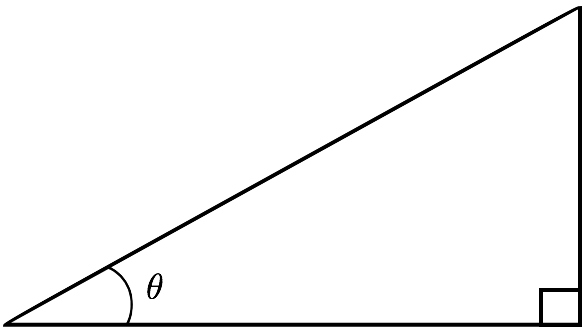Hi, Paul,
I'm not sure this is what you had in mind, but PCC has problems with labeled dynamic triangles. Look in the Library: Subject:"Trigonometry", Chapter:"Triangle trigonometry", Section:"Sine, cosine, and tangent of an angle in a right triangle".
We've done a few at the College of Idaho, but the angles have to be not too small. They are not yet in the OPL--perhaps this summer, I'll work on tagging. Also, greek letters don't seem to be available. PCC uses the letters spelled out. Here's the code for one of ours.
--rac
========================================
##DESCRIPTION
## Trigonometry: Law of Sines
##ENDDESCRIPTION
##KEYWORDS('trigonometry', 'law of sines')
## DBsubject('Trigonometry')
## DBchapter('')
## DBsection('')
## Date('01/2016')
## Author('RA Cruz')
## Institution('The College of Idaho')
## TitleText1('')
## EditionText1('')
## AuthorText1('')
## Section1('')
## Problem1('')
DOCUMENT(); # This should be the first executable line in the problem.
loadMacros(
"PGstandard.pl",
"MathObjects.pl",
"PGchoicemacros.pl",
"PGgraphmacros.pl",
"alignedChoice.pl",
"unionTables.pl",
);
######################################
# Set-up
$a = random(4,9,1);
$A = random(25,40,5);
$C = random(70,85,5);
$B = 180 - $A - $C;
$c = $a*sin($C*pi/180)/sin($A*pi/180);
$b = $a*sin($B*pi/180)/sin($A*pi/180);
$xc = $b*cos($A*pi/180); #C is at the top of the triangle
$yc = $b*sin($A*pi/180);
$Hmin = -2;
$Hmax = $c + 2;
$Vmin = -2;
$Vmax = $yc + 2;
$picW = 15*($Hmax-$Hmin+2);
$picH = 15*($Vmax-$Vmin+2);
$refreshCachedImages=1;
$graph = init_graph($Hmin,$Vmin,$Hmax,$Vmax,size=>[$picW,$picH]);
$graph->moveTo(0,0); #A is at the origin
$graph->lineTo($xc,$yc,1); #Draw to C
$graph->lineTo($c,0,1); #Draw to B to the right
$graph->lineTo(0,0,1);
#$graph->fillRegion([2,1,'yellow']);
$lab_a = new Label($xc+0.7*($c-$xc),0.5*$yc+0.2,"$a",'black','center','bottom');
$lab_a->font(GD::Font->Giant);
$graph->lb($lab_a);
$lab_b = new Label(0.5*$xc,0.5*$yc+0.2,"b",'red','center','bottom');
$lab_b->font(GD::Font->Giant);
$graph->lb($lab_b);
$lab_c = new Label(0.5*$c,-0.3,"c",'red','center','center');
$lab_c->font(GD::Font->Giant);
$graph->lb($lab_c);
$labA=new Label(-0.5,0.5,'A','black','center','center');
$labA->font(GD::Font->Giant);
$graph->lb($labA);
$labAdeg=new Label(0.2*$c,1,"$A",'black','center','center');
$labAdeg->font(GD::Font->Giant);
$graph->lb($labAdeg);
$labB=new Label($c+0.5, 0.5,'B','red','center','center');
$labB->font(GD::Font->Giant);
$graph->lb($labB);
$labC=new Label($xc,$yc+1,'C','black','center','center');
$labC->font(GD::Font->Giant);
$graph->lb($labC);
$labCdeg=new Label($xc-.1,0.85*$yc,"$C",'black','center','center');
$labCdeg->font(GD::Font->Giant);
$graph->lb($labCdeg);
######################################
# Main text
TEXT(beginproblem());
#TEXT("a = $a, b = $b, c =$c, B = $B $BR"); #For checking
BEGIN_TEXT
Solve for the unknown sides and angles of the triangle shown below.
Give the angle(s) in degrees.
$BR $BR
\{
ColumnTable(
"\(b = \) ".ans_rule(6).
"$BR $BR".
"\(c = \) ".ans_rule(6).
"$BR $BR".
"\(\angle B = \) ".ans_rule(6)."\(^\circ\)",
$BCENTER.
image(insertGraph($graph), width=>$picW, height=>$picH, tex_size=>500 ).
$BR.
$ECENTER,
indent => 0, separation => 30, valign => "TOP"
)
\}
$BR
$BITALIC
Note: If no such triangle exists, type ${BBOLD}No triangle$EBOLD for each answer.
$EITALIC
END_TEXT
######################################
# Answer
Context("Numeric");
Context()->strings->add("No triangle"=>{},None=>{alias=>"No triangle"});
$ans1 = Compute("$b");
ANS($ans1->cmp(showTypeWarnings=>0));
$ans2 = Compute("$c");
ANS($ans2->cmp(showTypeWarnings=>0));
$ans3 = Compute("$B");
ANS($ans3->cmp(showTypeWarnings=>0));
$showPartialCorrectAnswers = 1;
#####################################
# Solution
BEGIN_SOLUTION
$PAR Solution: $BR $BR
We need the angle at \(B:\)
\(\angle B = 180^{\circ} - $A^{\circ} - $C^{\circ} = $ans3^{\circ}\)
$BR $BR
Use the Law of Sines to find \(a\) and \(c\):
$BR $BR
First we find \(a\):
\(\dfrac{a}{\sin($A^{\circ})} = \dfrac{$b}{\sin($B^{\circ})} \\)
$BR
\(a = \dfrac{$b\sin($A^{\circ})}{\sin($B^{\circ})} \approx $ans1\)
$BR $BR
Similarily, find \(c\):
\(\dfrac{c}{\sin($C^{\circ})} = \dfrac{$b}{\sin($B^{\circ})} \\)
$BR
\(c = \dfrac{$b\sin($C^{\circ})}{\sin($B^{\circ})} \approx $ans2\)
END_SOLUTION
ENDDOCUMENT();
